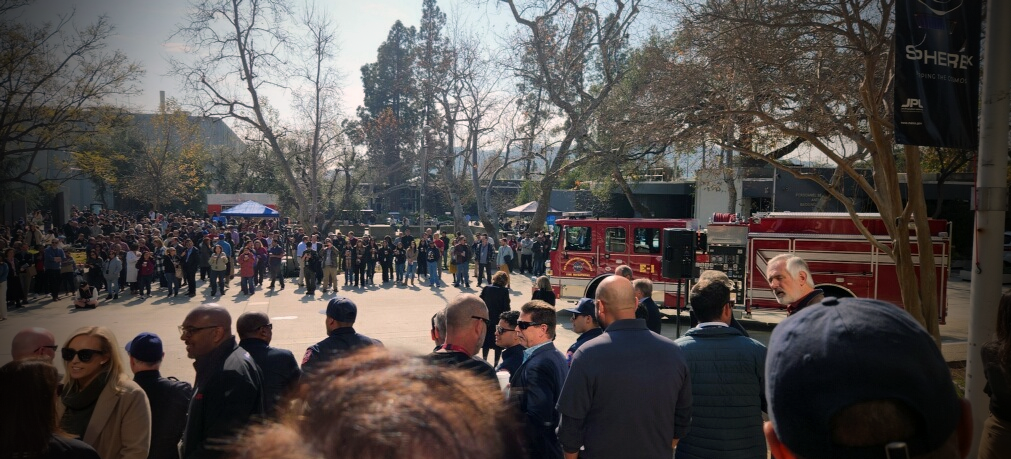When the Eaton fires recently ravaged the Altadena, CA area, the Peraton operations team at the Jet Propulsion Laboratory’s (JPL) Space Flight Operations Facility found themselves facing an unexpected challenge: how to ensure business continuity for NASA’s critical missions despite the shutdown of JPL and its evacuation.
Fortunately, Peraton’s team leveraged the DSN’s emergency control center (ECC)– a remote facility specifically designed to support DSN operations in cases of crisis, and located at the DSN’s Goldstone Deep Space Communications Complex.
The Goldstone ECC, which was originally established to handle potential earthquakes, had never been used for a real-world emergency—until now. With the Eaton fires forcing JPL to close its doors and evacuate staff, the clock was ticking to relocate the ongoing operations.

Photo: NASA/JPL
Peraton’s team was able to execute the transition to the ECC in record time. The team had just 12 hours to evacuate and re-establish operations, but rigorous previous testing allowed them to complete the move in half that time. First, all systems at JPL were powered down, and then the team swiftly relocated the operations to Goldstone. Once everything was restabilized at JPL and the power and systems were restored, Peraton moved operations to the Monrovia facility, where they continued monitoring and controlling missions remotely until the environment at JPL was determined safe for employees to return.
“We test this ECC system rigorously every year and try to simulate real-world scenarios as closely as possible,” said Henry “Sonny” Giroux, program manager at DSN. “This emergency proved that all our planning and preparation paid off. We were able to step in and keep the mission’s data flowing, ensuring no loss of continuity.”
Despite the severity of the situation, the team ensured that operations for nearly 40 missions were supported, with 11 of those relying on the ECC for continuous communication with Earth. The spacecrafts require regular periodic commands to avoid triggering a safe mode – this occurs when communication between Earth is lost for too long. The DSN and the Peraton team worked tirelessly to establish uplinks and downlinks to radiate commands to the spacecraft from the mission and for the mission to validate the command receipt through downlinks, ensuring resetting of the command loss timer.
The successful continuity of operations when faced with a natural disaster speaks to Peraton’s commitment to preparedness. While the need for a backup system like the ECC is rare, it is an invaluable asset for situations where the unexpected happens.
“One of the most critical aspects of the operation is that we never skip the rigorous testing of our ECC systems,” said Mark Jahshan, vice president and general manager of civil space at Peraton. “When it came time to implement this emergency backup, we were ready. Our team’s training, combined with years of preparation, made sure there was no interruption in mission support.”
Thanks to Peraton’s diligence and commitment to safety, NASA’s missions continued uninterrupted even in the face of unexpected dangers. In addition, Peraton partnered with the American Red Cross to provide critical assistance to support those at risk, including more than 900 of our employees. The company remains committed to causes that affect its people and the communities in which they live and work.





